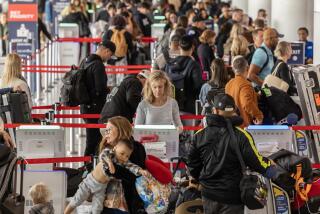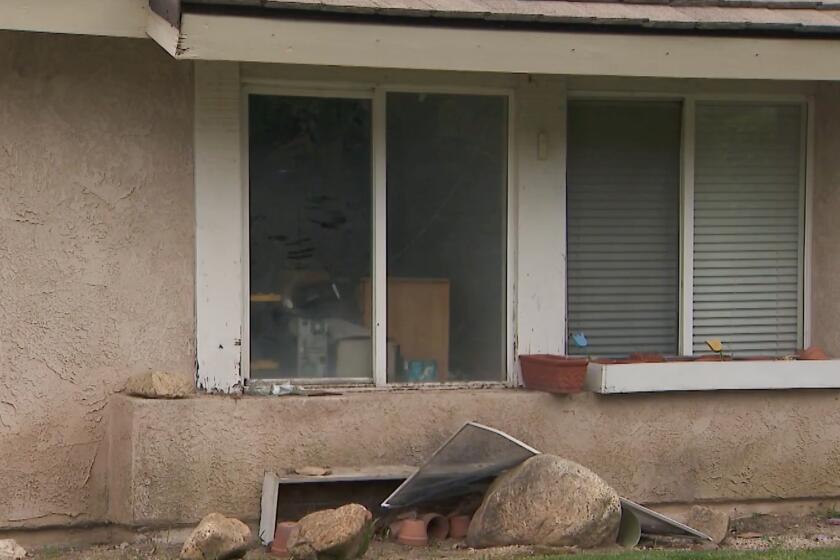New Rules for <i> Quinceanera</i> Stir Complaint : Ceremony: Guidelines alter traditional Latino celebration of a girl’s 15th birthday, some say. But church officials say the new approach will stress spirituality and reduce cost to families.
A set of guidelines dealing with quinceaneras, a 15th birthday tradition for young Latinas, has put the Archdiocese of Los Angeles at odds with a group of Catholic Latinos who say the rules alter their customs.
Church officials say the guidelines, which were distributed to all churches in the Los Angeles Archdiocese last January, are meant to educate priests who might not be familiar with the tradition and to provide ways of dealing with a shortage of Spanish-speaking clergymen.
But a group of Latinos, who have staged protests at two churches, say many parishes have interpreted the suggestions as hard-and-fast rules and in doing so are eradicating the quinceanera tradition, which has been likened to the coming-out parties of debutantes, but with a simultaneous emphasis on religious renewal.
“We want some answers,” said Spencer Schmerling, one of 30 protesters at a rally last Sunday at St. Vibiana Cathedral in downtown Los Angeles. “Why did these guidelines come about? Why are our traditions being trampled by the church?”
Luis Yanez, organizer of the rally and president of Grupo Latino Por Nuestras Tradiciones (Latino Group for Our Traditions), said the protests are an attempt to attract Archbishop Roger M. Mahony’s attention, who Yanez said has refused to meet with members of his group. In a letter sent to Mahony in February, the group asked to meet with him and pointed out the guidelines they opposed. One of these is that quinceaneras should not be accompanied by the customary 14 couples (one representing each year of the girl’s life), Yanez said. Another guideline the group takes issue with suggests that quinceanera Masses should be held for a group of girls instead of one girl at a time.
Yanez, who owns a bridal shop in Reseda that makes dresses for quinceaneras, acknowledged that he has a business interest in seeing the tradition continue unaltered. But he said the guidelines reflect a “lack of understanding” about Latino customs on the part of the church.
Father Anastacio Rivera, director of the Hispanic Ministry in Los Angeles Archdiocese, met with Yanez and others from his group at Mahony’s request. Rivera has told members of the group that the guidelines help alleviate a shortage of Spanish-speaking priests that has forced many churches to choose between performing weddings and baptisms in Spanish or quinceanera Masses.
“There are many churches that have been pushed against the wall because of a desperate need for priests who can lead Masses in Spanish,” said Rivera, who added that Latinos make up nearly 60% of the church’s following in the Los Angeles Archdiocese.
Rivera added that the suggestions stress the solemnity of the event and play down the social aspects of it.
“Many times people forget the true purpose of the quinceanera tradition, which is to reaffirm your faith,” he said. “There is alcohol served at the party after the Mass, and people spend money that they don’t have.”
Yanez said that the average family spends about $3,000 on a quinceanera, but he said some families have been known to spend up to $25,000.
Father Douglas G. Ferraro, who heads the office of pastoral and parish services, which published the guidelines, said he has received complaints about the guidelines only from parishioners and, unless nuns or priests complain, the guidelines will not be rewritten.
But Father Nicolas Garcia, who is based in the Ventura Mission, said he has expressed his discontent with the guidelines several times.
“These guidelines will cause people to turn to Protestant churches who are willing to celebrate quinceaneras ,” warned Garcia, who sent a pamphlet he authored on the quinceanera tradition to all 33 churches in the Santa Barbara Region of the Los Angeles Archdiocese. “The Archdiocese needs to respect our traditions. Listen to us.”
Garcia said he has organized a meeting May 2 between a representative of Ferraro’s office and all of the Latino priests in the Santa Barbara Region to discuss the guidelines and what can be done to improve them.
Meanwhile, Bishop Juan Arzube, who heads the archdiocese’s San Gabriel pastoral region, sent a memorandum to priests there suggesting that no church should ban the ceremony. Arzube said he encouraged the ceremony because it provides “a teachable moment for the young person, her companions and her family.”
“The objection that there are no Spanish-speaking priests in a particular parish is not valid, because most of the young people speak English,” Arzube wrote in the memo, dated March 7. “Furthermore, there are enough priests who speak Spanish in the neighboring parishes that one of them could be invited to do the ceremony.”
Father Domingo Zuniga, of Our Lady Queen of Angels in downtown Los Angeles, said sometimes the amount of money spent on the celebration is “a bit shocking,” but that the church should not interfere in how the families spend their money.
Zuniga’s church, which is commonly known as La Placita, has not adopted the guidelines and up to four traditional quinceanera Masses take place there every Saturday.
In an effort to stress the spirituality of the ceremony, Zuniga’s church requires quinceaneras who want a Mass at La Placita to have been baptized, have completed their first communion and have attended an intensive daylong preparatory class offered by the church.
“We consider the quinceanera a family celebration here, and we respect the family’s traditions,” Zuniga said in Spanish.
More to Read
Start your day right
Sign up for Essential California for news, features and recommendations from the L.A. Times and beyond in your inbox six days a week.
You may occasionally receive promotional content from the Los Angeles Times.






